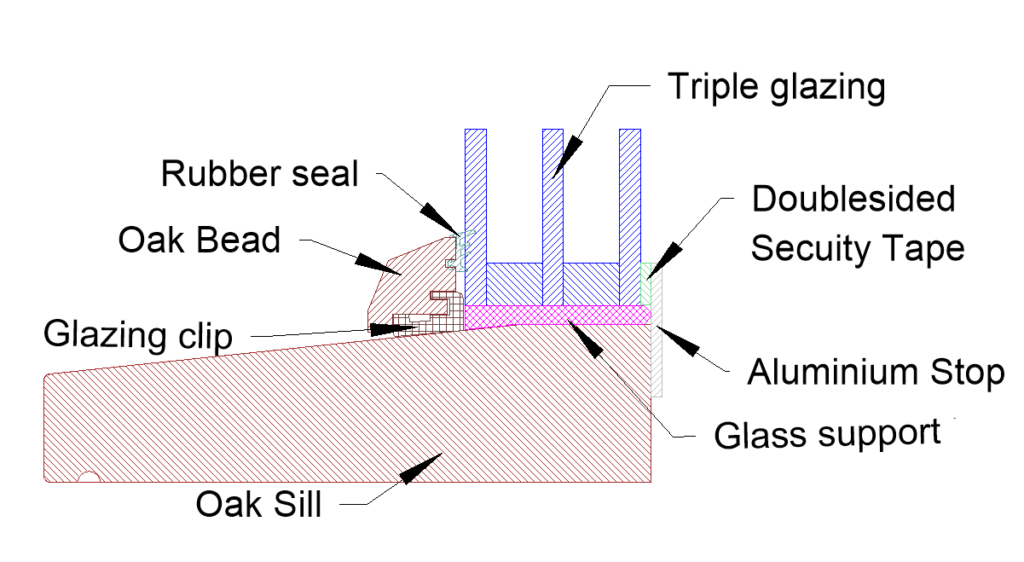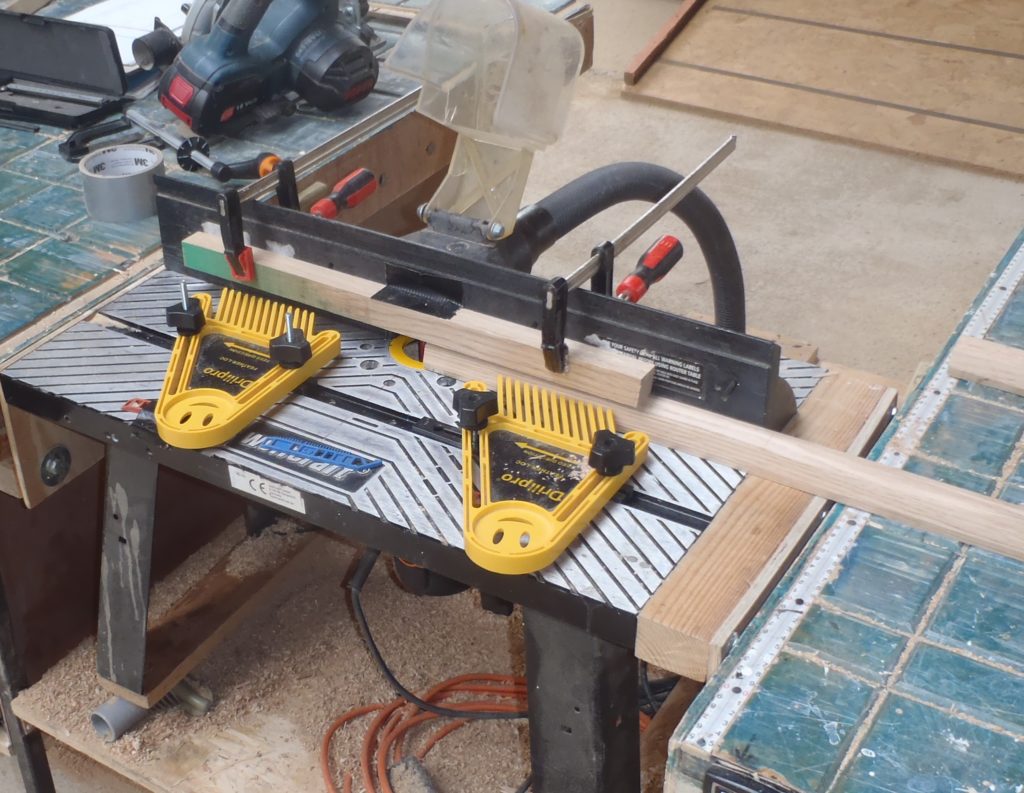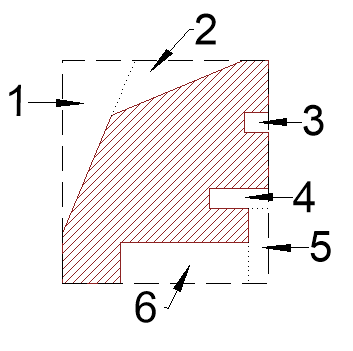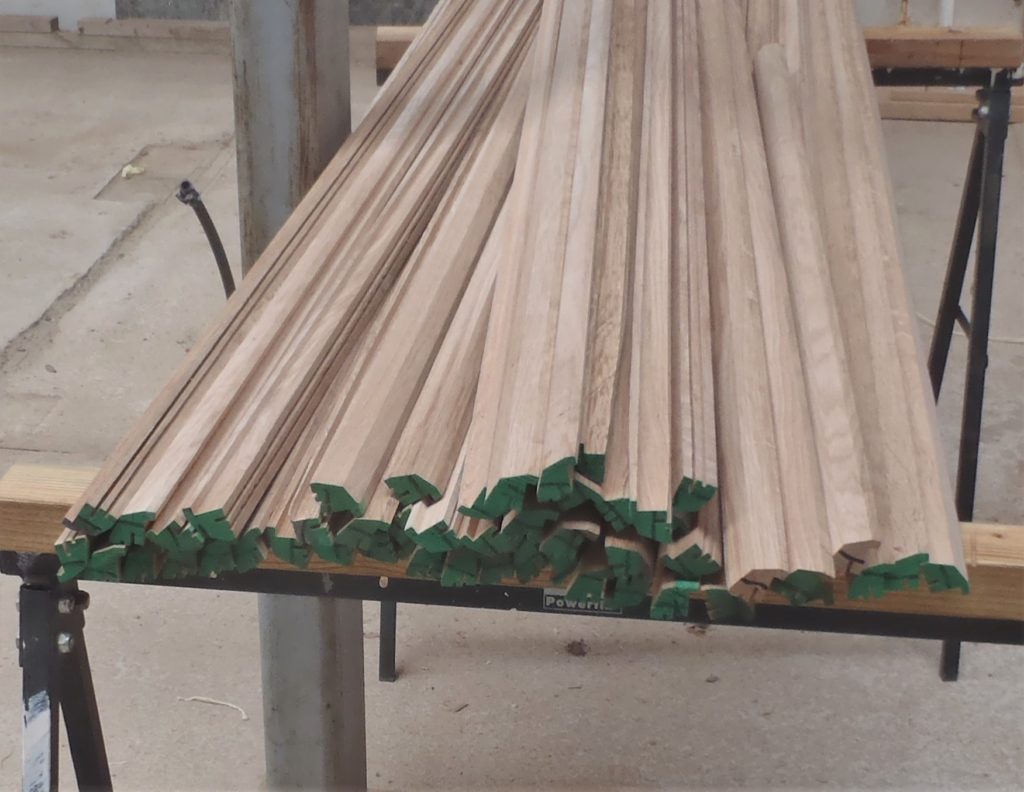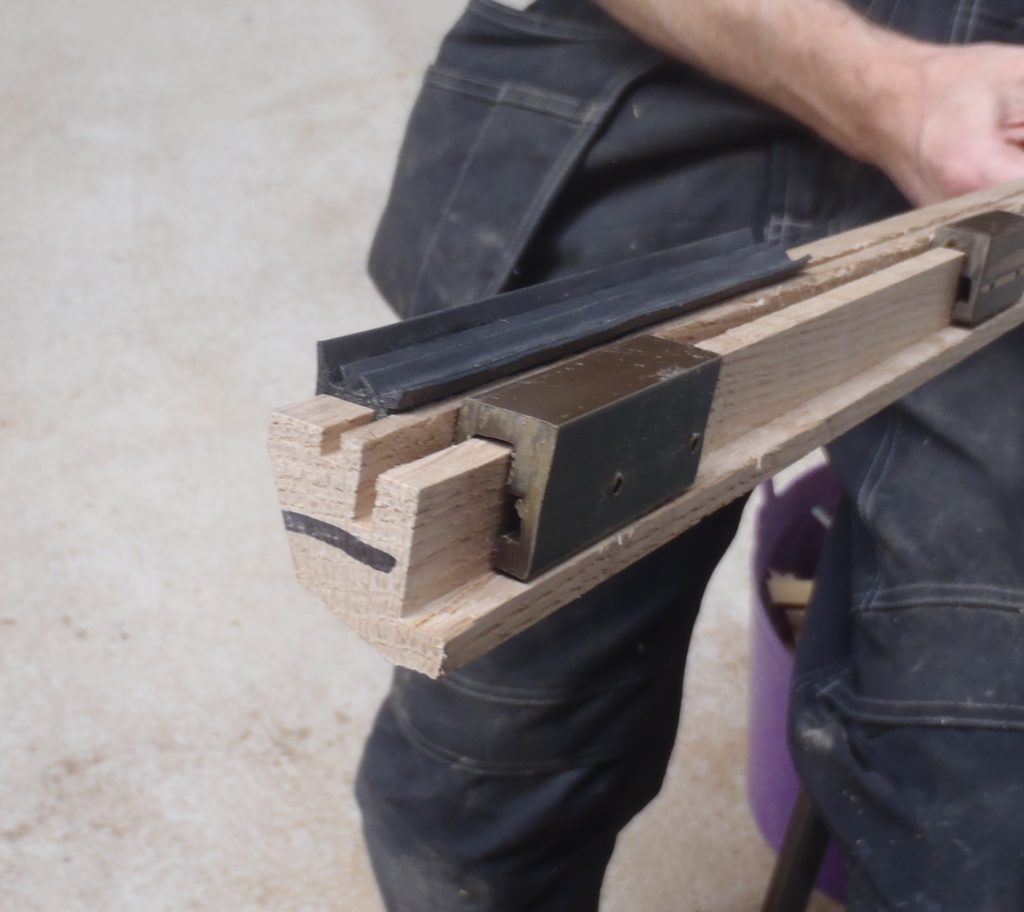These last five days have seen the creation of the Oak Beading strips that will hold the triple glazing units into the window frames.
The beads are held in place by clips are specially designed to grip the timber piece without having to use screws or nails and making a very neat finishing covers around the edge of the glass.
This means that the Oak strips needed lots of steps to produce the required slots and gaps, using our router. But before that, we had to make a collection of planed strips ready for that complex task. We took all our prime oak timber out of storage, 2metres planks at 29mm thick and widths from 100mm to 150mm. We swopped one or two of them when we discovered that they were a bit too wobbly.
Then, using the similar process we used before, we slice a straight edge using our Track saw, and then pass each plank through our table saw to make a pile of 33mm wide by 29mm pieces. We produced 56 of them, eight more than what we required.
The planer machine and its two long support tables were assembled and we proceeded to plane all the strips on two edges to get them clean. Then through the thickener stage to end up with smooth finished battens measuring 25mm by 27mm.
Now we are ready to use the Router to remove wood material in various ways, using various router bits (three of them!) in a total of seven passes through the machine to achieve our neat and hopefully elegant beadings.
We used up a fair number of test pieces, trying different techniques and different styles before settling on the final method and final finish we like the look of.
1 The front visually exposed surfaces had a 22.5 degree angles sliced off
2 Then the top was removed to create a gentle slope down and a slope up, to meet in the middle
3 The narrow slot for holding the rubber glazing seals was cut using a very fine 2.3mm wide blade, going 5mm deep.
4 Another fine slot, again a 2.3mm wide but 9mm deep this time.
5 Then an area 12mm high and 2.5mm deep was removed. This is part of the plastic clip, the vertical part.
6 Finally, the bottom gap was created, a 19mm wide by 5mm deep removed off the bottom of the oak strips, done in two passes.
It was a very fiddly job to do, but with lots of patience, with lots of help from using clamped on oak strips and springy fingers, to guide each of the 56 pieces through the machine, we got there in the end.
We are now ready to order the glass! See next report!
